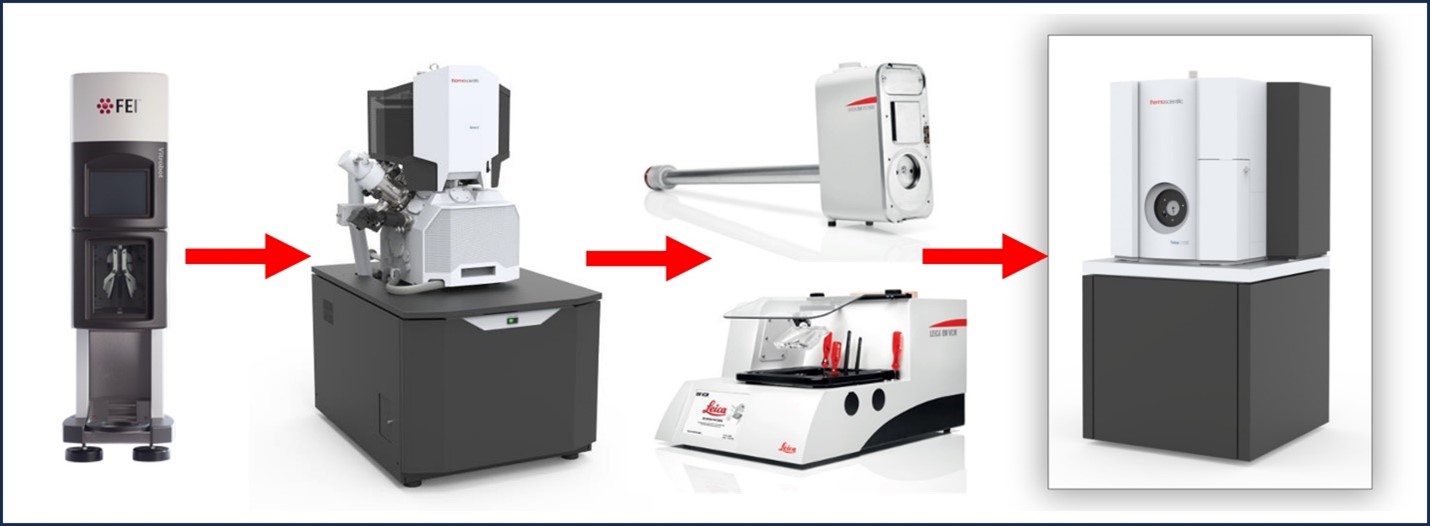Capabilities include:
Talos L120C Dedicated Cryogenic Transmission Electron Microscope (cryo-TEM)
- User-switchable accelerating voltages from 20–120 keV.
- A high-speed camera (40 fps at 4k x 4k) optimized for imaging at low keV.
- Room temperature and cryogenic electron tomography (cryo-ET) with a tilt range of +/– 70o.
- Cryogenically cooled "cryo-box," gives greater stability when imaging cryogenically frozen samples.
- Vitrobot for rapid and reproducible sample vitrification.
Scios 2 Dual Beam Scanning Electron Microscope (cryo-FIB/SEM)
- Focused ion beam milling capability (SEM/FIB) optimized for the imaging, sectioning, and TEM lamellae preparation of soft matter and beam sensitive materials.
- A specialized in-column T3 detector optimized for low-kV, low energy secondary electron detection.
- A dedicated cryo-cooled SEM stage from Leica Microsystems provides the capability to section and image frozen samples, yielding information on internal microstructure.
- Cryogenic lift-out can be performed on milled samples and transferred to the Talos L120C, covering a wide range of length scales in the characterization of frozen, hydrated samples.
Leica Cryogenic Transfer Equipment
- The Leica cryo-workflow is specially designed to allow sample preparation and transfer while maintaining a frozen state and includes a shuttle (VCT-500), sample transfer workstation (VCM), and sputter coater/freeze fracture unit (ACE-600).
- Transfer from Ar glove box to cryo-FIB via VCT-500 for reactive materials (Li, Na etc.)
Leica THUNDER Cryo-CLEM
- Precisely identify cellular structures of interest thanks to high resolution, haze-free optical imaging.
- Transfer to the cryo-FIB and correlate with SEM using MAPS software to precisely identify milling locations.
Contact: John Watt
Research Highlight:
A Sodium-Antimony-Telluride Intermetallic Allows Sodium-Metal Cycling at 100% Depth of Discharge and as an Anode-Free Metal Battery
Wang, Y.; Dong, H.; Katyal, N.; Hao, H.; Liu, P.; Celio, H.; Henkelman, G.; Watt, J.; Mitlin, D. A. Adv. Mater. 2022, 34 (1), e2106005. doi.org/10.1002/adma.202106005
